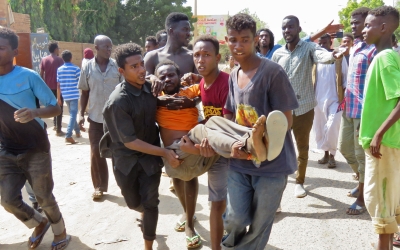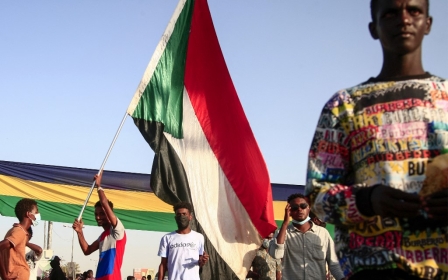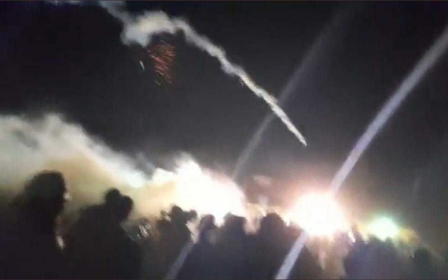Sudan coup: One dead, scores wounded as sit-in mounted outside presidential palace

Scores of protesters were wounded and one killed on Sunday as security forces used tear gas and live ammunition after hundreds of thousands of people marched to the presidential palace in Khartoum to demonstrate against the October military coup.
The protesters staged a sit-in outside the building and sources told Middle East Eye that some of the demonstrators had managed to enter the building for a few hours before being removed.
Sudan's health ministry said late on Sunday that "123 people were injured in Khartoum and two in Kassala," a city in the east.
The Central Committee of Sudanese Doctors said 28-year-old Majzoub Mohammad Ahmad was shot and killed with "a bullet in the chest" in the Sharg al-Nile area, across the river from Khartoum.
"The people want the downfall of Burhan," protesters shouted against the current military chief, General Abdel Fattah al-Burhan, who led the coup on 25 October.
The protests also marked the third anniversary of the burning of a ruling party building that touched off a popular uprising that eventually led to the overthrow of President Omar al-Bashir.
There were a series of cat and mouse street battles between the police and the protesters in and around the streets near the palace.
There had been intense security measures earlier on Sunday, including the deployment of the feared Rapid Security Forces, the closure of bridges and main roads in Khartoum, and the widespread arrests of activists and members of resistance committees.
Remarkably, some military officers helped the protesters, opening the barricades, as well some of the bridges linking the twin cities of Khartoum and Omdurman, witnesses said.
Standing in front of the palace, Ezaldin Ali told MEE that the resistance committees were against any compromise with the army or with Prime Minister Abdalla Hamdok, who had been under house arrest following the coup, but was reinstated on 21 November.
Ali said demonstrators would continue protesting but may use different tactics to bring the current government down.
“We raised our clear and radical slogans that there will be no partnership with the army, no compromise, and no negotiations, so we will stand against the military ruling forever,” he said.
'We stand with our brothers and sisters'
Many protesters had walked hundreds of kilometres from different parts of the country to reach Khartoum - including from Gezira and Sennar States in central Sudan, El Obeid in the west, and Atbara city in River Nile State.
Ahmed Mahmoud, from Al Hasahisa in Gezira, told MEE that he and others had walked more than 100km for four days in order to join the protests.
“We moved from Al Hasahisa four days ago and thousands of people from the villages on the way between our city and Khartoum joined us."
Resistance committees said they would continue the sit-in around the palace until the military rule was ended.
Sources in the sovereign council say the government is considering holding an early election next year, before scheduled elections in 2023, as a solution to the crisis.
Hamdok said in a statement on Saturday that Sudan's revolution faced a "major setback" and that stubbornness from all sides threatened the country's unity and stability.
"We face today a major setback to the path of our revolution that threatens the country's security, unity, and stability, which alerts us to the beginning of a backslide into a pit that leaves us neither a nation nor a revolution," Hamdok said.
Middle East Eye delivers independent and unrivalled coverage and analysis of the Middle East, North Africa and beyond. To learn more about republishing this content and the associated fees, please fill out this form. More about MEE can be found here.






